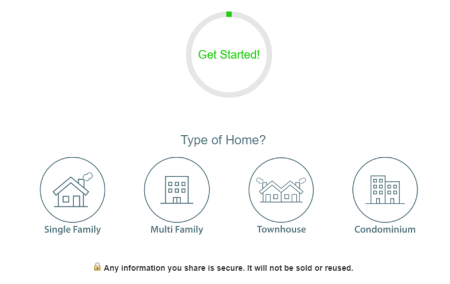As a business, you have probably spent a lot of time having a website designed and created to market your product and services. You might direct people back to that website through paid advertisements or through posts made on your numerous social media accounts. Perhaps to a beautiful landing page with the perfect call-to-action.
You feel you have done everything right, but you noticed that you don’t seem to be getting the leads you thought you would. Or perhaps you are getting an abundance of leads, but they are all poor-quality leads that are not generating new business. The issue could be with an often overlooked yet vital component to online lead generation. That is the lead generation form itself.
Any lead generation form you use needs to be given the same care and attention to detail as any other component of your website or online marketing strategy. Conversions can vary drastically based on the length of a form, or the specific information you request from a lead. Even one simple field may be enough to turn potential leads away.
Creating Quality Lead Capture Forms that Convert
You have reviewed your marketing efforts and have determined you need to update your lead capture forms. Where do you start? Let’s review some of the most critical aspects of building quality lead capture forms.
Length of Lead Capture Forms
The length of your lead capture forms may be one of the most difficult things to dial in. Short forms are easy for people to fill out and take no time at all. However, if your form is too short, your inbox may be flooded with leads, but they may all be poor-quality leads that do not convert. Forms that are too long can have the opposite result. The willingness to complete a form drops quickly as forms get longer and longer. They can be intimidating, or people might not have the time or patience to complete them. If this is the case, you may not be getting any leads at all even though you are getting the traffic you want.
Form length is all about finding the right balance, which may be easier said than done. If you are getting many leads but most tend to be a waste of time, consider adding a question or two that will better help you qualify those leads. This may cut down on the number of leads you receive, but you may find you are wasting less time on dead-end leads and are getting more quality leads that result in conversions. You can repeat this process until you find you are happy with the quality vs quantity balance of your leads.
The opposite can be done if you realize your form is too long. Perhaps you designed it this way so that you could fully qualify a lead before contacting them. Consider cutting down to fewer questions that will allow you to make a general evaluation to determine if it is worth your time to contact them. This will result in more leads and you will still have enough information to make an educated evaluation of those leads. Once you contact those leads, you can gather the remaining information you need.
The Form Fields You Choose
This leads us directly into our next important factor. You have decided you need to add or subtract fields from your form, but which do you keep, and which do you remove? Of course you are going to need basic contact information such as a name, phone number, and email address. From there, look at each question and determine if that field is essential. Meaning, is the field mandatory for you to be able to qualify and contact your lead.
As an example, if you are offering mortgages, there are likely a few important questions you want to know up front. Perhaps it is vital to know if a person is looking to purchase a home or refinance an existing loan. You may also need to know their estimated credit score to determine if they will be able to qualify for the loans you offer. However, your form may also include questions that are not necessarily needed to qualify the lead. Maybe you ask questions about a lead’s employer and employment history. If those fields are not mandatory for you to make an assessment on the quality of a lead, consider removing them. Remember, you are only trying to determine if a lead will be a right fit for you.
Ease of Use
Another way to improve your lead capture is to simply make it easier to use. Older forms may have required you to manually type the answer to each question asked. This is both time consuming and can occasionally lead to typos or incorrect information. The ability to answer questions quickly, accurately, and with minimal effort can improve your lead generation. Forms that can be completed easily may also allow you to add a couple of extra questions to better qualify a lead, without turning them away. It only takes but a second to click the answer to a question.
It is also incredibly important to consider mobile users in today’s world. Many people are visiting your site on mobile devices and answering lengthy text fields can instantly turn potential leads away. Simplifying your form so that questions can be answered with the click of a mouse or the touch of a finger on a mobile device can increase the number of leads you generate.
If you are getting too many low-quality leads or very few leads in general, take a close look at your lead capture forms. You may need to update them to find the balance that gives you the results you are looking for. A few simple changes here and there can make all the difference.










